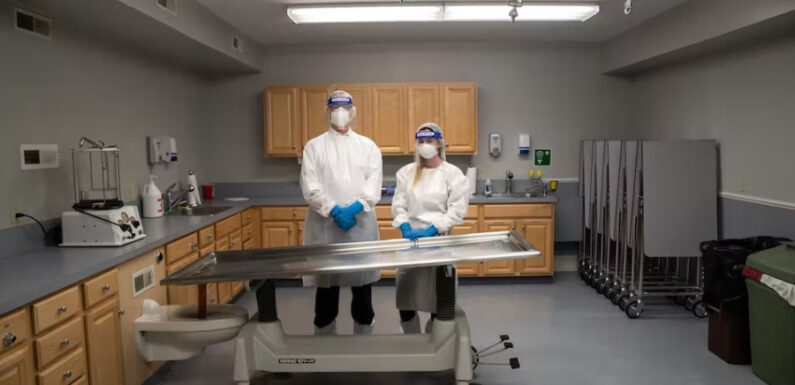
There are various ways that funeral directors store bodies after the service. The first step is cleaning the body thoroughly. Then, they apply a disinfectant solution to ensure that there are no germs present. Next, they close the eyes and mouth with a cap or a special glue. Lastly, the body is lifted into the casket. Specially-designed lifts are used to move the body safely.
When a body is removed, it is often covered in formaldehyde. Some bodies need more restoration, and a mortician may have to reconnect the neck with a wooden dowel. Another technique is using a rosy dye to replace the graying flesh. Most funeral homes do not have devices that measure the level of formaldehyde. It is important that the medical facility that sends the body to the funeral home has a device to measure the level of radiation before the body is shipped.
When a body arrives at a funeral home, it is normally placed in refrigeration units to prevent decomposition. This allows the funeral director to prepare the body for burial or cremation. Then, after dressing, the body is transported to a cemetery or crematory. The final destination of the body depends on the family’s wishes, religious preference, and the services desired at the funeral home. A properly prepared family will make the final decision about the final disposition.
Another consideration is the identification of the body. While state laws differ regarding this process, individual facilities usually determine their own procedures based on industry recommendations. In most cases, a family member confirms the body’s identity. After confirmation, a metal ID tag is applied to the body and stays there throughout the process. After final identification, the remains are placed in a container that will hold them until they are returned to the family.
The process of embalming is also a vital one. This process preserves the human body by slowing the natural decomposition process. It also allows the deceased to look more lifelike. If embalming is not possible for the deceased, the funeral director may recommend some other options. They can help with choosing burial clothing. If you do not know what kind to choose, ask the funeral director to recommend a style.
In most cases, a casket is buried in a concrete outer burial container. Other bodies are entombed in mausoleums or above-ground crypts. The graves are marked with a headstone, usually bearing the name of the deceased. This is a common way to honor the deceased and ensure that there is no environmental damage. If you don’t want to spend the money on burial, you can choose a green burial instead.
There are many options for caskets at funeral homes. If you are unable to find one that is appropriate for your loved one, consider hiring a casket rental company. Many funeral homes reuse caskets to cut down on costs. If you plan a quick funeral, you can also skip the embalming process. This is a popular choice for many families. The process can be costly, but it’s worth it if the body is not expected to be kept for long. Visit to create a service unique to you or your loved one: chestnutfh.com

